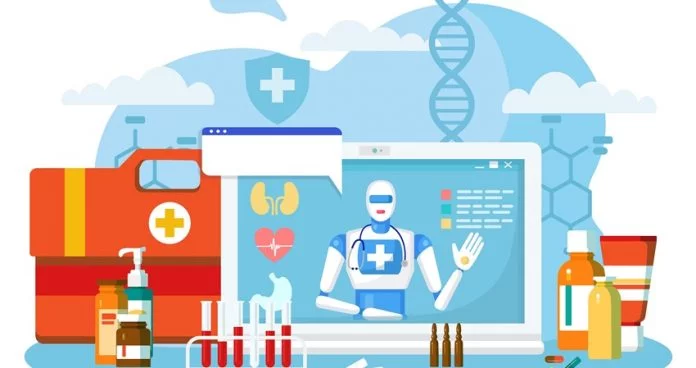Microsoft is demonstrating some of its new healthcare tools and capabilities. The company will be showcasing these at the annual Health Information Management Systems Society (HIMSS) conference next week.
Microsoft’s Healthcare Bot will be generally available for the public. Also, the addition of more specific healthcare- features to Teams with new health-record integration capabilities makes it a power punch.
The concept of Healthcare Bot service commenced as a research project in 2017. The service allows users to create AI-powered health assistants and Chatbots.
The bot is actually an AI-powered virtual assistant that captivates a powerful symptom checker and more of the medical content, packed with the capability to customize to different settings and businesses.
This Healthcare Bot service can also integrate with Electronic Health Records.
AI and the Healthcare Industry
This technology is evidently the game-changer in the healthcare industry.
According to the reports by Frost & Sullivan, the AI market for healthcare is likely to experience a CAGR of 40% by 2021 and has the potential to change industry outcomes by 30-40%, while cutting treatment costs in half.
In the words of Satya Nadella, “AI is the runtime that is going to shape all of what we do going forward in terms of the applications as well as the platform advances”.
Here are a few ways Microsoft’s Healthcare Bot will shape the Healthcare Industry
-
Integration with Electronic Health Records
EHR brought some significant changes in healthcare, but it wasn’t a smooth transition as problems like user burnout, endless documentation, and cognitive overload caused certain limitations.
But post-AI, you can actually automate the processes and make the interfaces more instinctive.
-
Medical Imaging
AI plays a pivotal role in enabling the intelligence in the radiological images obtained through scanning machines. X-rays, CT scanners, and MRI aren’t foolproof because they aren’t always accurate.
Doctors often rely on alternate methods to make better decisions. But AI has completely refurbished the negativities of the machines by providing highly accurate inputs.
-
Virtual Health Assistant
There are health monitors and devices that have AI incorporated in them. Here are a few ways in which that can happen:
- Reminds the patient to take their medication at the appointed time
- Provides medical advice when they have complaints
- Suggestions regarding diet and eating habits for people with diet restrictions
- Reminding when they are about to run out of medicines and order prescriptions
- Reminding them of doctor appointments and manage bookings
-
Proactive Medical Care
Suppose a patient goes to a doctor with some symptoms of diabetes, and the doctor does all the tests before prescribing insulin shots. This kind of treatment is known as reactive medical care.
With Artificial Intelligence, there’s been a shift in this trend as reactive medical care became proactive medical care.
In this, the patient’s medical history is studied and the high-risk markers are highlighted.
Patients at risk are monitored for any change in their condition, and if anything seems alarming, then the app will suggest medical intervention.
Recommended For You:
What is Content Mapping? How it will help your Business in 2019?
Marketing Automation – Upgrade your Business
Visit YourTechDiet for more!

